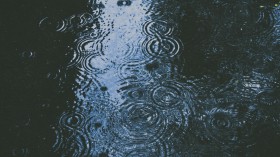Unlike anything you might find under the kitchen sink, four new types of carnivorous sponges have been discovered living in the deep sea. Up until now, only seven of this species had been found in Pacific waters - 20 years from when scientists first discovered their existence - but marine biologist Lonny Lundsten with the Monterey Bay Aquarium Research Institute, along with two Canadian researchers, published a paper detailing four new carnivorous sponges.
Found on the deep sea floor from the Pacific Northwest to Baja California, the new sponges look like bare twigs or small shrubs covered in small hairs, according to a release from the institute. The hairs are made up of tightly packed bundles of microscopic hooks used to trap small animals. Within hours, the sponge cells begin to engulf and digest the prey, and within days, the trapped animal is nothing more than an empty shell.
Many of the sample sponges collected for research contained within them "numerous crustacean prey in various states of decomposition," said Lundsten.
Most sponges live off bacteria and single-celled organisms drawn from their home waters, using specialized cells called choancytes. These have whip-like tails in constant motion, creating a flow of water that brings food to the sponge. In the case of carnivorous sponges, however, most do not have choancytes.
"To keep beating the whip-like tails of the choancytes takes a lot of energy, and food is hard to come by in the deep sea," said Lundsten. "So these sponges trap larger, more nutrient-dense organisms, like crustaceans, using beautiful and intricate microscopic hooks."
While the evidence makes it clear that sponges were consuming their crustacean prey, scientists have yet to observe the process of digestion in action. Though the researchers described just four new types of carnivorous sponge in their most recent paper, they hope to see the digestion process in the other samples from they have seen and collected.
"Numerous additional carnivorous sponges from the Northeast Pacific await description, and many more likely await discovery," said Lundsten.
The team originally detailed its findings in the journal Zootaxa.
© 2024 NatureWorldNews.com All rights reserved. Do not reproduce without permission.





